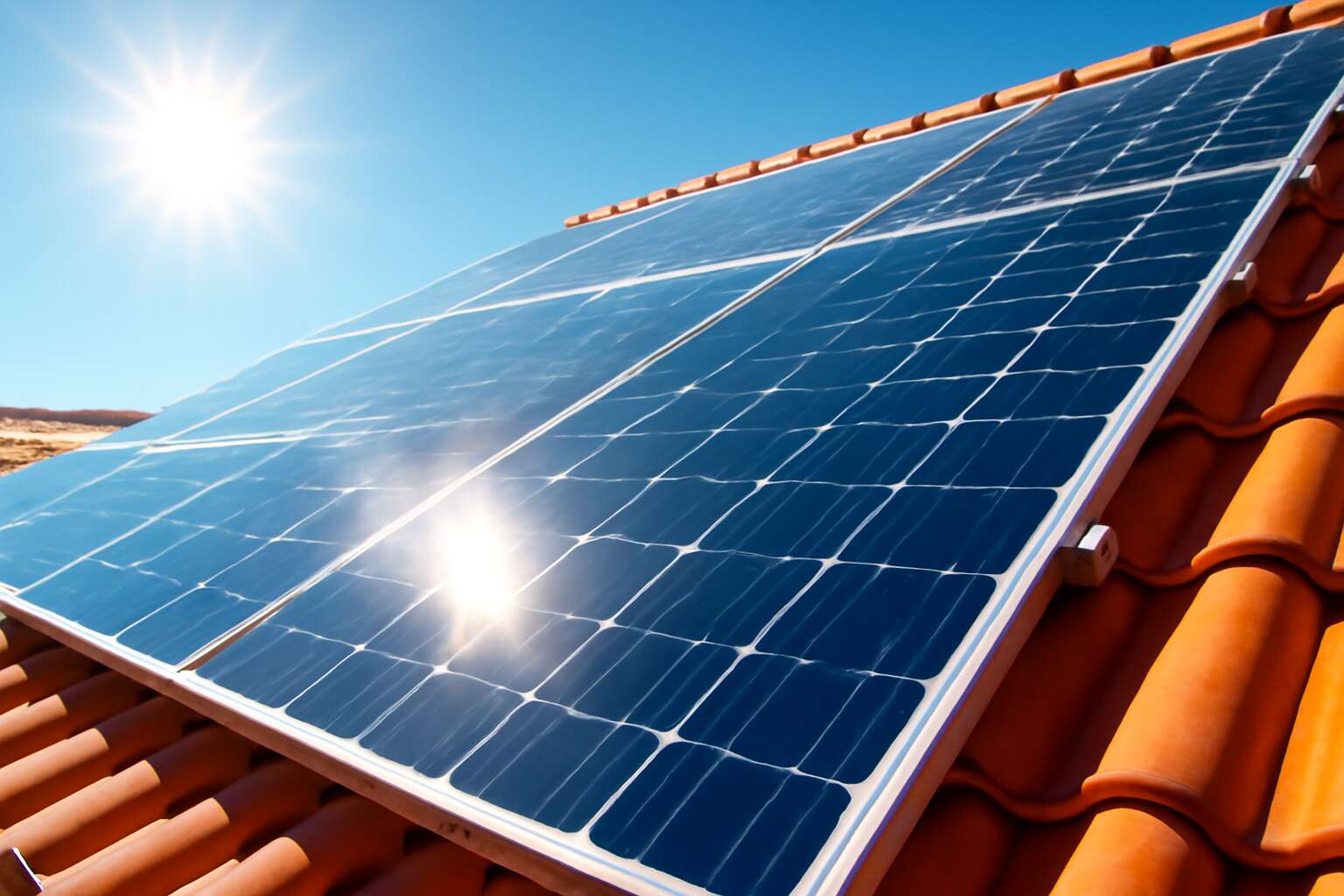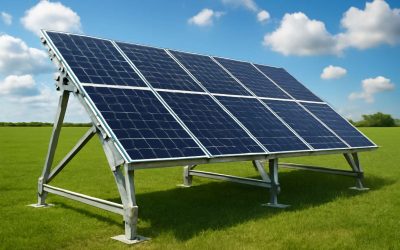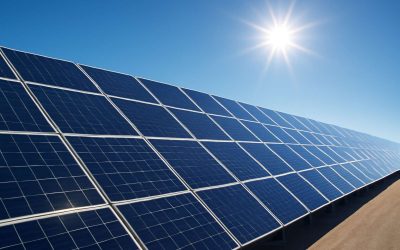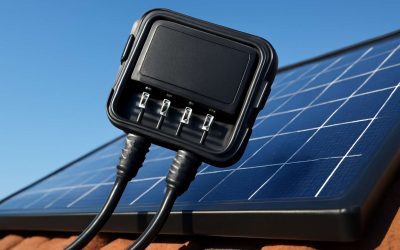Understanding the Trends in Solar Panel Pricing
Current State of Solar Panel Prices – Analyzing recent data and market trends
Amidst the relentless march of technological innovation, the question echoes louder than ever: are solar panel prices dropping? Recent market analyses reveal a compelling narrative—solar energy’s cost landscape is shifting dramatically. With manufacturing efficiencies soaring and raw material costs stabilising, the price of solar panels has begun to tumble, opening a floodgate of possibilities for homeowners and industries alike.
Current data showcases a downward trajectory in solar panel prices, driven by global supply chain improvements and increased competition among manufacturers. This trend isn’t merely a temporary blip; it’s a sustained movement that promises to transform the renewable energy horizon. As the cost barrier diminishes, solar becomes more accessible, inviting a renaissance of clean energy adoption across diverse sectors.
To better understand this evolution, consider these key factors influencing the market:
- Advancements in photovoltaic technology boosting efficiency
- Mass production techniques reducing per-unit costs
- Expanding global supply chains easing material scarcity
Indeed, the question isn’t just whether solar panel prices are dropping, but rather how swiftly this decline will accelerate, reshaping the way we harness the sun’s boundless energy. An era where solar power is not a luxury but a standard might be nearer than ever before!
Historical Price Trends – How prices have changed over the past decade
Over the past decade, the narrative surrounding solar panel prices has undergone a profound metamorphosis. In 2013, the average cost of a standard solar panel hovered around £2.50 per watt, a figure that seemed almost insurmountable for the average homeowner. Today, thanks to relentless innovation and market consolidation, prices have plummeted—sometimes by as much as 80% in certain regions. This trajectory begs the question: are solar panel prices dropping at a pace that could redefine energy affordability?
Historical price trends reveal a pattern of sharp declines, punctuated by periods of stabilisation before further drops. These fluctuations are largely driven by advancements in photovoltaic technology and economies of scale. For instance, the evolution of monocrystalline panels has significantly boosted efficiency, making the same wattage more affordable. Meanwhile, expanding global supply chains have alleviated material scarcity—further driving down costs.
- Market saturation among manufacturers has intensified competition, fostering innovation and cost reduction.
- Mass production techniques have become more sophisticated, decreasing the per-unit expense.
- Raw material costs, particularly for silicon, have stabilised, creating a more predictable pricing landscape.
Indeed, the historical trajectory of solar panel prices underscores a relentless downward trend—an evolution driven by technological ingenuity and economic forces. As this trend persists, the question transforms from whether prices are dropping to how swiftly they will continue to do so, heralding a new era where solar energy becomes an accessible, mainstream resource for all.
Factors Influencing Solar Panel Costs – Manufacturing, technology advancements, and supply chain influences
In the intricate ballet of solar panel pricing, a handful of factors pirouette at centre stage—each influencing whether prices are dropping in a way that truly transforms the energy landscape. Manufacturing advancements have been pivotal; with automated production lines and tighter quality controls, the cost per unit has dramatically decreased. As solar panel technology evolves, efficiency leaps become more commonplace, meaning consumers can now generate more power with fewer panels—further driving down costs.
Supply chain dynamics also wield considerable influence. Disruptions, such as tariffs or material shortages, can temporarily halt price declines. However, recent stabilisation in raw material costs, especially for silicon—the backbone of photovoltaic cells—has created a more predictable and favourable environment for price reductions. To understand how these components interlace, consider this:
- Technological innovation pushes efficiency and reduces manufacturing costs.
- Global supply chains ensure materials are more accessible and less expensive.
- Market competition among manufacturers fosters innovation and price wars.
All these elements, in concert, make the question of whether solar panel prices are dropping not just a matter of curiosity but a sign of a sustainable shift towards more affordable solar energy. As the industry continues to evolve, the trajectory suggests that solar energy will soon be as commonplace as the morning cup of tea—accessible and effortlessly integrated into daily life.
Technological Advances and Their Impact on Prices
Improved Solar Cell Efficiency – How new technologies reduce costs
In the relentless pursuit of harnessing the sun’s power, technological advances have become the silent architects of change. Breakthroughs in solar cell efficiency are not merely incremental; they fundamentally alter the cost landscape. As innovations push the boundaries of how much sunlight a panel can convert into electricity, the real magic lies in the reduced need for material and manufacturing expenses. This progress significantly contributes to the question: are solar panel prices dropping? The answer is an emphatic yes.
New materials and manufacturing techniques have unlocked efficiencies previously thought impossible. For instance, perovskite solar cells offer the promise of higher efficiency at lower production costs, making solar energy more accessible. These advancements mean that as technology becomes more sophisticated, the cost per watt diminishes, directly impacting prices in the market.
Moreover, the integration of smart manufacturing methods, including automation and improved quality control, accelerates production while reducing waste. Here are some ways these technological strides influence the market:
- Enhanced efficiency reduces the number of panels needed for a given energy output.
- Lower manufacturing costs translate into more affordable retail prices.
- Increased durability extends panel lifespan, offering better long-term value.
Ultimately, the trajectory of technological innovation indicates that solar power will become not only more efficient but also increasingly cost-effective, answering the question: are solar panel prices dropping? with a resounding affirmation. The confluence of scientific ingenuity and industrial optimisation continues to reshape the economic landscape of solar energy, making it more accessible and sustainable than ever before.
Innovations in Manufacturing – Automation and scale economies
Technological advances are revolutionising the solar industry at an unprecedented pace. Automation in manufacturing processes has become a game-changer, allowing for rapid scale-up and cost reductions that once seemed impossible. This shift not only increases production capacity but also slashes expenses, making solar panels more affordable than ever before. The real magic lies in how these innovations optimise resource utilisation, minimise waste, and accelerate delivery timelines.
To illustrate, companies are now adopting cutting-edge techniques such as robotic assembly lines and AI-driven quality control. These methods dramatically improve efficiency, directly impacting the retail price of solar panels. As a result, the economy of scale kicks in—mass production drives down costs, creating a ripple effect across the market.
Here’s a quick snapshot of how manufacturing innovations influence pricing:
- Automation reduces labour costs and errors.
- Mass production scales economies, decreasing per-unit costs.
- Enhanced quality control extends panel lifespan, delivering better long-term value.
All these technological strides collectively affirm that the question — are solar panel prices dropping — is answered with a clear yes. Industry pioneers continue to push boundaries, ensuring solar energy becomes increasingly accessible and cost-effective.
Emergence of New Materials – Reduced material costs and enhanced performance
The solar industry is undergoing a renaissance driven by the emergence of innovative materials that transform the very fabric of solar technology. These cutting-edge compounds not only lower manufacturing costs but also unlock new levels of performance, making solar panels more accessible than ever. It’s a marvel to witness how advancements in material science are forging a future where affordability and efficiency go hand in hand.
One of the most captivating developments is the utilisation of perovskite cells, which promise to revolutionise solar panel prices dropping by offering higher energy conversion rates at a fraction of traditional costs. Additionally, researchers are experimenting with thin-film technologies and flexible substrates, enabling panels to be lighter, cheaper, and easier to deploy across diverse environments. These materials inherently reduce raw material consumption, further driving down costs while enhancing durability.
To appreciate the impact, consider this:
- Reduced material costs thanks to innovative compounds
- Enhanced performance through superior energy capture
These breakthroughs are not just technological marvels; they are the catalysts propelling solar panel prices dropping on a scale previously thought impossible. As new materials continue to emerge, the question shifts from “are solar panel prices dropping?” to “how far can they fall?” The future is luminous indeed!
Market Dynamics Affecting Solar Panel Prices
Global Supply Chain Factors – Impacts of raw material availability and logistics
The global push towards renewable energy has never been more urgent, and with it, the question persists: are solar panel prices dropping? One of the key drivers behind this trend is the evolving global supply chain. Disruptions in raw material availability, such as silicon and rare earth elements, have historically caused fluctuations in solar panel costs. Yet, recent improvements in logistics and sourcing have begun to stabilise prices, making solar technology more accessible than ever before.
Logistics play a pivotal role in this dynamic. Delays in shipping, transportation bottlenecks, and geopolitical tensions have all impacted the procurement of essential materials. However, advancements like localisation of manufacturing and diversified supply routes are mitigating these issues. As a result, the cost of production is gradually decreasing, contributing to the broader realisation that are solar panel prices dropping is more than just a trend—it’s becoming a reality. This shifting landscape fuels hope for a future where renewable energy is within everyone’s reach, transforming communities and empowering individuals to embrace sustainable living.
Government Policies and Incentives – Subsidies, tax credits, and tariffs
Government policies and incentives are a significant force shaping the landscape of solar technology affordability. Over the past few years, many countries have introduced generous subsidies, tax credits, and favourable tariffs to encourage renewable energy adoption. These measures directly impact whether solar panel prices are dropping by reducing upfront costs and making installations more attractive to consumers. In some regions, tariffs on imported solar panels have been lowered, easing supply chain pressures and allowing prices to fall. Conversely, recent trade disputes have temporarily slowed down price reductions in certain markets.
To navigate this complex environment, many governments have adopted strategic programmes like:
- Subsidies for solar installation
- Tax credits for homeowners and businesses
- Reduced tariffs on key components
These initiatives create a favourable market environment, accelerating the downward trend in solar panel prices. As a result, more people can access renewable energy solutions, and the realisation that are solar panel prices dropping is not just a fleeting trend but a sustainable shift in the industry.
Competition Among Manufacturers – How increased competition drives prices down
In a fiercely competitive market, the question isn’t just whether solar panel prices are dropping — it’s how the relentless drive among manufacturers is propelling costs downward at an unprecedented rate. As more players enter the arena, innovation accelerates, pushing the boundaries of efficiency and affordability. This surge in competition sparks a ripple effect that benefits consumers with lower prices and better technology.
Manufacturers are locked in a battle for dominance, often undercutting each other with aggressive pricing strategies. The result? A significant decrease in the cost per watt, making solar energy more accessible than ever. To grasp the scale of this competition, consider the following factors:
- Massive investments in automation streamline production, reducing labour costs and waste.
- Economies of scale achieved through large-scale manufacturing further drive prices down.
- Innovative materials and improved solar cell efficiency allow for cheaper, more durable panels.
This intense rivalry isn’t just about profit margins; it’s about reshaping the entire industry landscape. As manufacturers race to outdo each other, the real winner is the consumer—who benefits from the ongoing trend of are solar panel prices dropping, making renewable energy more affordable and widespread.
Cost Comparison and Affordability
Cost to Install Solar Panels – Comparison over recent years
In the shadowed corridors of renewable energy, a whisper persists—are solar panel prices dropping at a pace that transforms the landscape of affordability? Over recent years, the cost to install solar panels has plummeted, revealing a stark contrast to their once exorbitant price tags. This decline isn’t merely a matter of numbers; it’s a symphony of technological innovation and market forces converging to make sunlight cheaper than ever before.
Compared to just a decade ago, the cost to install solar panels has halved, favouring those brave enough to harness the sun’s dark allure. The relentless march of automation and economies of scale in manufacturing has slashed production costs, while emerging materials have further reduced price barriers. For many homeowners, this means solar energy is no longer a distant dream but a feasible reality. As competition among manufacturers intensifies, the price of solar panels continues to dwindle, echoing the ancient truth that in chaos, opportunity often blooms.
- Manufacturers benefit from innovations that lower raw material costs.
- Government incentives and subsidies act as spectral guides, illuminating the path to affordability.
- Global supply chain shifts influence the availability and price of raw components.
In essence, the question isn’t just whether solar panel prices are dropping, but how rapidly the shadows of the past recede, revealing a future where solar energy becomes a spectral force in modern living.
Long-term Savings and Return on Investment – Financial benefits of declining prices
As solar technology becomes more accessible, the financial landscape for renewable energy shifts dramatically. The decreasing cost of solar panels means that what was once a luxury is now an attainable asset for many households. The long-term savings are compelling—imagine slashing your electricity bills and seeing your investment grow over years of reliable, clean energy production.
Long-term affordability is propelled by the persistent decline in solar panel prices. As the initial investment drops, the return on investment (ROI) becomes increasingly attractive. In fact, many homeowners now see solar power as a way to generate passive income, thanks to excess energy fed back into the grid. The cumulative savings can be quite substantial, often outweighing the upfront costs within just a few years.
Considering the financial benefits, it’s no surprise that the market is witnessing a surge in interest. The question on everyone’s mind remains: are solar panel prices dropping fast enough to redefine energy independence? The answer is a resounding yes, as continuous advancements and market competition accelerate the decline, making solar energy more affordable and appealing than ever before.
Regional Price Variations – Differences across countries and states
Across the globe, the landscape of solar energy costs is undergoing a seismic shift. As renewable energy becomes more mainstream, regional price variations reveal striking differences—highlighting just how dynamic the market truly is. While some countries enjoy steep declines, others still grapple with higher costs due to logistical challenges or tariffs. This disparity underscores the importance of understanding regional factors that influence solar panel prices.
In certain markets, government incentives and favourable trade policies have accelerated price drops, making solar power more accessible. Conversely, regions with limited supply chain infrastructure tend to see slower reductions. For example, countries with robust manufacturing hubs or strategic resource access typically experience more rapid decreases in solar panel costs. This uneven progress sparks a compelling question: are solar panel prices dropping fast enough to truly democratise access to clean energy?
Ultimately, the answer hinges on local conditions, technological advancements, and market competition. As these elements continue to evolve, the affordability of solar energy is poised to become even more compelling, regardless of where you are on the map. The ongoing price convergence across regions hints at a future where solar power isn’t just a luxury but a universal standard—fuelled by the relentless momentum of innovation and global cooperation.
Future Outlook for Solar Panel Pricing
Predicted Price Trends – Expert forecasts and market analyses
Forecasts indicate that the downward trajectory of solar panel prices is likely to persist over the coming years. Industry experts predict a continued decline driven by technological innovations and economies of scale. As manufacturing processes become more automated and efficient, the cost of producing solar panels drops significantly. This trend enhances affordability and makes solar energy more accessible to a wider audience.
Market analysis suggests that the question “are solar panel prices dropping” will soon be answered with a resounding yes. Advances in new materials and improved solar cell efficiency are key factors reducing costs. Additionally, global supply chain improvements and increased competition among manufacturers are expected to keep prices trending downward. In fact, some forecasts project that solar panel prices could fall by up to 50% within the next decade, making solar power an even more compelling investment.
Potential Impact of Emerging Technologies – Perovskite solar cells and other innovations
As the shadows of uncertainty lengthen across the energy landscape, a whisper of hope emerges from the horizon—an era where solar panel prices dropping might soon be a commonplace tale. Emerging technologies, like perovskite solar cells, threaten to revolutionise the very fabric of solar energy, promising not only increased efficiency but also drastically reduced costs. These innovations cast a pall of transformation, illuminating the path to affordability that once seemed distant and elusive.
In the depths of this technological renaissance, the potential for solar panel prices dropping by up to 50% within the next decade becomes a tangible reality. The advent of new materials and the relentless pursuit of enhanced solar cell efficiency serve as catalysts, forging a future where solar power is no longer a distant dream but a readily accessible resource. As automation in manufacturing accelerates and economies of scale deepen, the darkness surrounding high costs begins to lift, revealing a landscape ripe with promise.
Emerging technologies hold the key to unlocking this future. The mysterious allure of perovskite solar cells, with their superior light absorption and flexible application, hints at a paradigm shift—one where solar panels become lighter, cheaper, and more efficient. This technological alchemy could reshape market dynamics, making the question “are solar panel prices dropping” a foregone conclusion rather than mere speculation. In this ever-evolving narrative, innovation remains the guiding star, steering us towards a horizon where solar energy’s dark veil is finally lifted.
Market Barriers and Challenges – Supply constraints, trade policies, and infrastructure needs
While the sun’s rays continue to bless us with abundant energy, the journey to affordable solar panels isn’t without its shadows. Supply constraints remain a formidable barrier—limited raw materials and logistical bottlenecks threaten to slow down the relentless march of price drops. As demand surges, especially in regions eager to harness renewable energy, manufacturers scramble to keep pace, sometimes resulting in shortages that temporarily halt the downward trajectory of solar panel prices.
Trade policies, tariffs, and geopolitical tensions inject an unpredictable flavour into the market stew. Countries vying for dominance often impose tariffs that inflate costs, casting doubt on whether the trend of *are solar panel prices dropping* will continue unimpeded. The infrastructure needed to support widespread solar adoption is another hurdle; without robust grid upgrades and installation networks, even the most affordable panels sit idle, waiting for their moment to shine.
- Overcoming supply chain bottlenecks
- Mitigating trade policy uncertainties
- Expanding infrastructure for installation and integration
Despite these challenges, optimism persists. Advances in manufacturing, automation, and economies of scale are slowly chiselling away at these barriers. It’s a complex dance—where innovation must outpace the hurdles—yet the momentum suggests that the question *are solar panel prices dropping* will soon be answered with a resounding yes, even amidst the inevitable chaos of global markets. The future of affordable solar energy hinges on whether these obstacles can be gracefully navigated or if they become the stumbling blocks that slow the sun’s inevitable rise in the energy universe.
How Consumers Can Benefit from Falling Prices
Tips for Selecting Cost-Effective Solar Solutions – Evaluating quality and pricing
In a market where the sun’s brilliance is increasingly harnessed, the question persists: are solar panel prices dropping? The answer is a resounding yes, and this shift offers a golden opportunity for consumers eager to embrace renewable energy. As prices decline, the pathway to installing solar solutions becomes more accessible, heralding a new era of sustainable living.
When evaluating cost-effective solar solutions, prioritising quality remains paramount. Cutting corners with inferior panels might seem tempting amid falling prices, but it can jeopardise long-term savings. Instead, focus on a balance of affordability and technological robustness. Look for panels with proven efficiency ratings and reputable manufacturing credentials, ensuring durability and optimal performance over time.
To navigate this evolving landscape, consider these tips:
- Compare warranties and certifications to gauge reliability
- Assess the overall system costs, including installation and maintenance
- Stay informed about emerging materials and manufacturing innovations that continually drive down the cost of solar technology
By doing so, consumers can make well-informed decisions that maximise their financial and ecological gains, all while enjoying the benefits of the decreasing prices of solar panels. As the market continues to evolve, understanding the nuances behind these price drops will empower buyers to harness the sun’s energy more effectively than ever before.
Maximizing Incentives and Rebates – Government programs and financing options
As solar panel prices dropping become more evident, consumers are seizing opportunities to maximise their investment in renewable energy. Government programmes and financing options are making solar adoption more affordable than ever before. These incentives can significantly reduce upfront costs, accelerating the path to energy independence.
Many regions offer attractive rebates and tax credits that directly lower the cost of installing solar panels. Additionally, favourable financing arrangements—such as low-interest loans—allow homeowners and businesses to spread payments over time, making solar solutions accessible without heavy initial expenditure.
For those exploring their options, understanding how to leverage these incentives can transform a financial challenge into a sustainable advantage. Here’s a quick overview:
- Research local government grants and subsidies.
- Compare available tax credits that can offset installation expenses.
- Explore flexible financing plans tailored for solar projects.
All of these elements contribute to a compelling realisation: with solar panel prices dropping and support mechanisms in place, harnessing the sun’s power is now more cost-effective and feasible for a broader audience than ever before. This shift continues to drive the momentum towards a greener, more sustainable future.
Steps to Make Solar Investment More Affordable – Financing, leasing, and long-term planning
As the sun’s gentle revolution continues to warm our planet, an intriguing transformation is unfolding in the realm of renewable energy — are solar panel prices dropping at a pace that makes solar investment more enticing than ever before. This downward trend opens a door for consumers eager to embrace sustainability without draining their coffers. With the cost of solar panels diminishing, leveraging flexible financing becomes a strategic dance—spreading payments over time or opting for leasing arrangements that turn a substantial upfront investment into a manageable monthly expense.
Long-term planning becomes vital here; imagine locking in lower energy costs for decades while sidestepping the volatility of energy markets. Many find that a carefully curated combination of government incentives, favourable loan options, and the latest innovations in solar technology can turn an initial investment into a wise, sustainable choice. The real magic lies in how these falling prices—are solar panel prices dropping—are reshaping the landscape, making solar power accessible to a broader audience eager to harness the sun’s boundless energy.
For those curious about the journey, here’s a quick overview of steps to make solar investment more affordable:
- Research local government grants and subsidies to reduce initial costs.
- Compare attractive tax credits that directly lower installation expenses.
- Explore financing options such as low-interest loans or solar leasing plans.
Each of these elements weaves together into a tapestry of opportunity, illustrating that when solar panel prices are dropping, the path to energy independence becomes not just a dream but an achievable reality. With innovation and support mechanisms converging, the future of solar energy gleams brighter than ever.




0 Comments